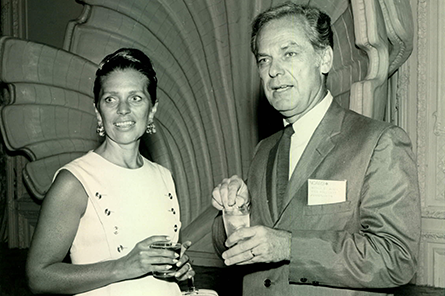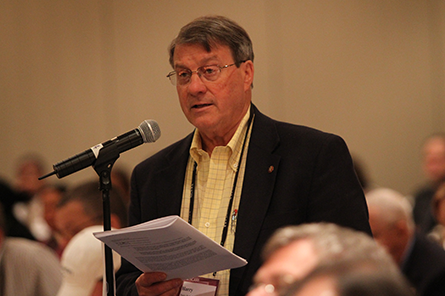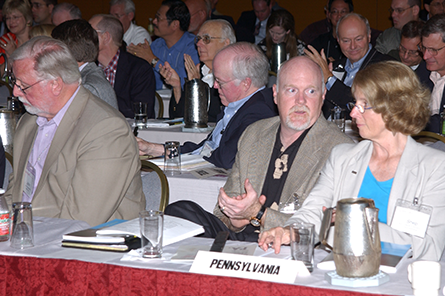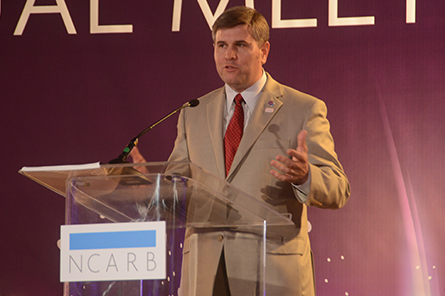Pennsylvania
Law Passed: 1919 • Joined NCARB: 1921 • Region 2—Middle-Atlantic (1965)
The Components of Licensure
Education
1921: Only a high school education is required; however, applicants with an approved college degree are exempt from the written exam.
1970: Applicants without a degree from a NAAB-accredited program can document 13 years of experience as an alternative.
1990: Pennsylvania requires a degree from a NAAB-accredited program or its equivalent as determined by the board.
Experience
1921: Three years of experience are required.
1970: Three years of experience are required for applicants with a degree from a NAAB-accredited program.
1992: The IDP is required, along with a duration requirement of three years.
Examination
1921: Applicants without an approved degree must pass a four-day written exam. Applicants with a degree must pass an oral exam.
1970: Pennsylvania begins administering NCARB’s national exam.
Noteworthy
Pennsylvania adopted NCARB’s five-year rolling clock standard in 2008.
Pennsylvania is home to seven NAAB-accredited programs, including Drexel University, which was accepted into the IPAL initiative in 2015.
Notable People
NCARB Presidents
1925-26: Miller I. Kast, FAIA (Harrisburg)
1930-31: Clarence W. Brazer (Chester)
Additional Members of the NCARB Board of Directors
2001-03: Dennis L. Astorino (Pittsburgh)
2004-05: Frank M. Adams (Bethlehem)
2012-14: Lynn Axelroth (Philadelphia)
2017-Present: Darryl R. Hamm (Harrisburg)
First Chairman/President
1919: John Hall Rankin, FAIA (Philadelphia)
First Board Members
Miller I. Kast, FAIA (Harrisburg)
Clarence W. Brazer (Chester)
Edward H. Davis (Scranton)
Edward Stotz, FAIA (Pittsburgh)
First Female Architects
1920: Anna Wagner Keichline
1934: Elizabeth Fleisher (First to become licensed by examination)



